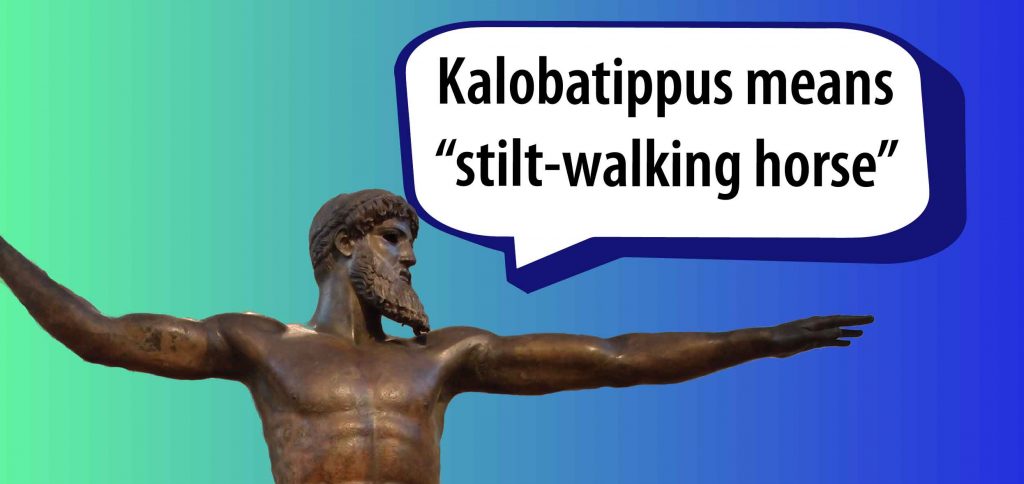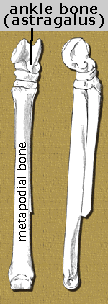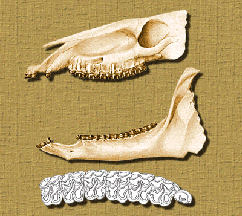At a time when horses were all intermediate in size and structure, this browsing horse must have really stood out as a peculiar-looking creature because of its very long legs.
Descendents of this horse circled the globe. Kalobatippus apparently gave rise to the European Anchitherium and to the East Asian Sinohippus.

Where & When?
Fossils of Kalobatippus are found at many Miocene localities in the western US. Species in this genus lived from 24-19 million years ago.
Why was it called the “stilt-walking horse”?

Kalobatippus earned its descriptive name from its elongated metapodials, the bones between the ankle/wrist and the toes. Thus these bones gave the animal longer legs, in contrast to its close relatives (Anchitherium, Hypohippus, and Megahippus).

The three-toed, short-toothed browsing anchitheres lived at the same time as many grass-eating (grazing) horses. In the late Miocene (about 10 million years ago), grazing horses diversified, but anchitheres became extinct.